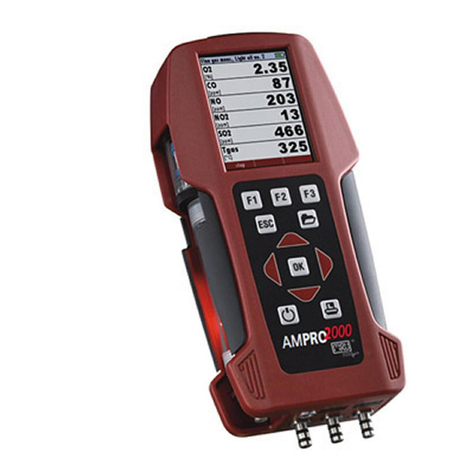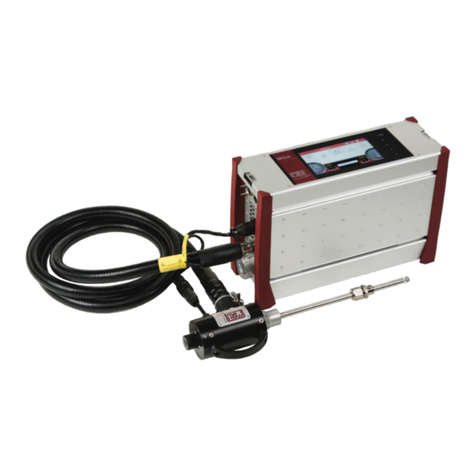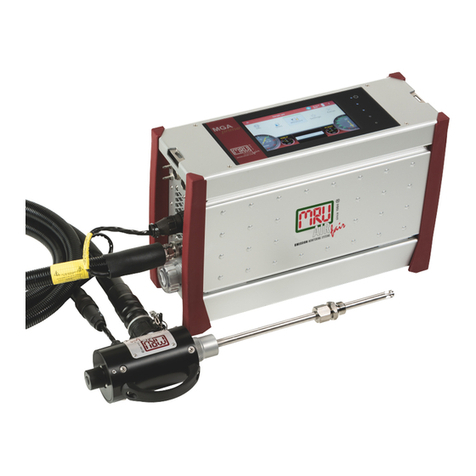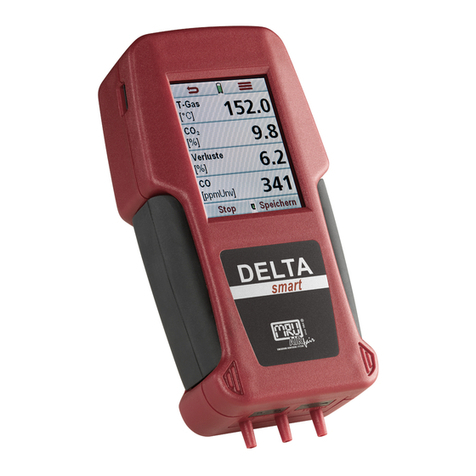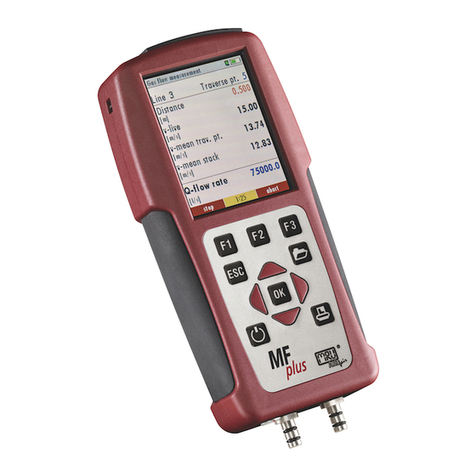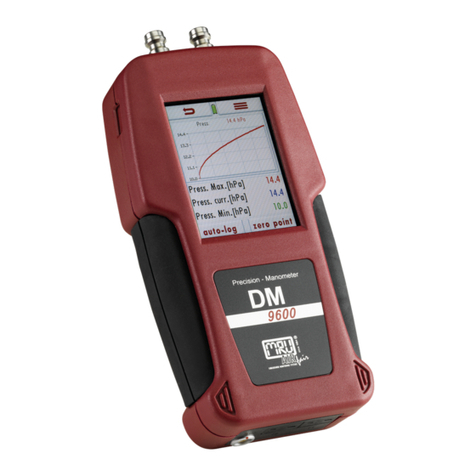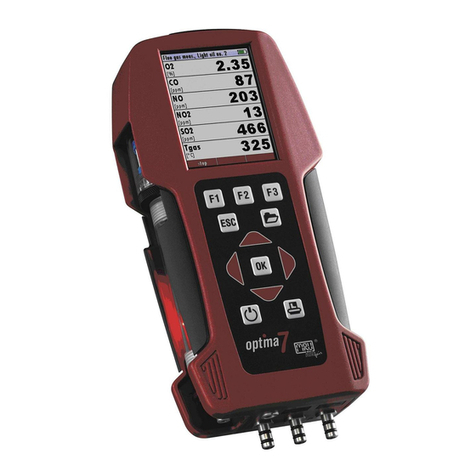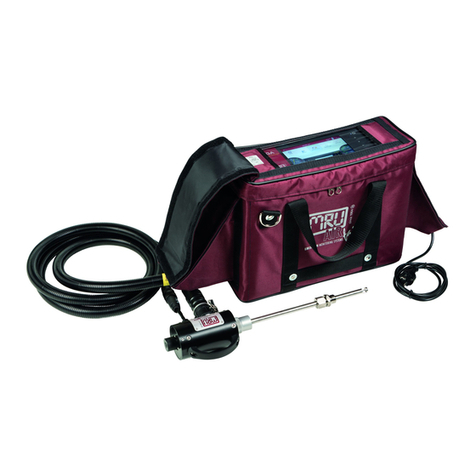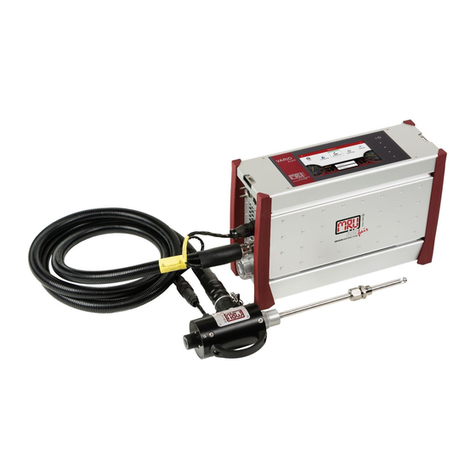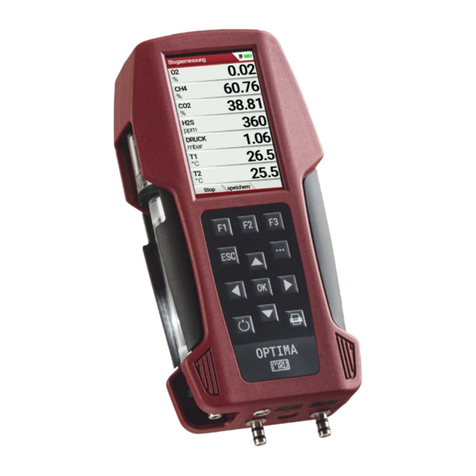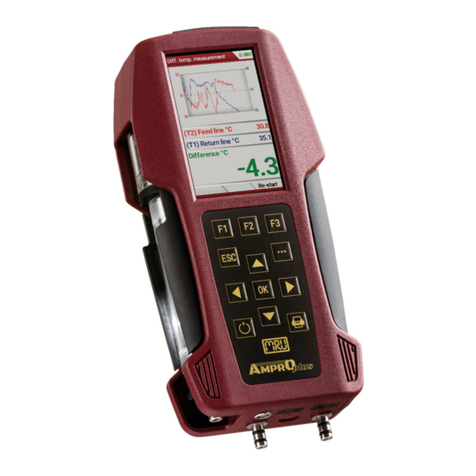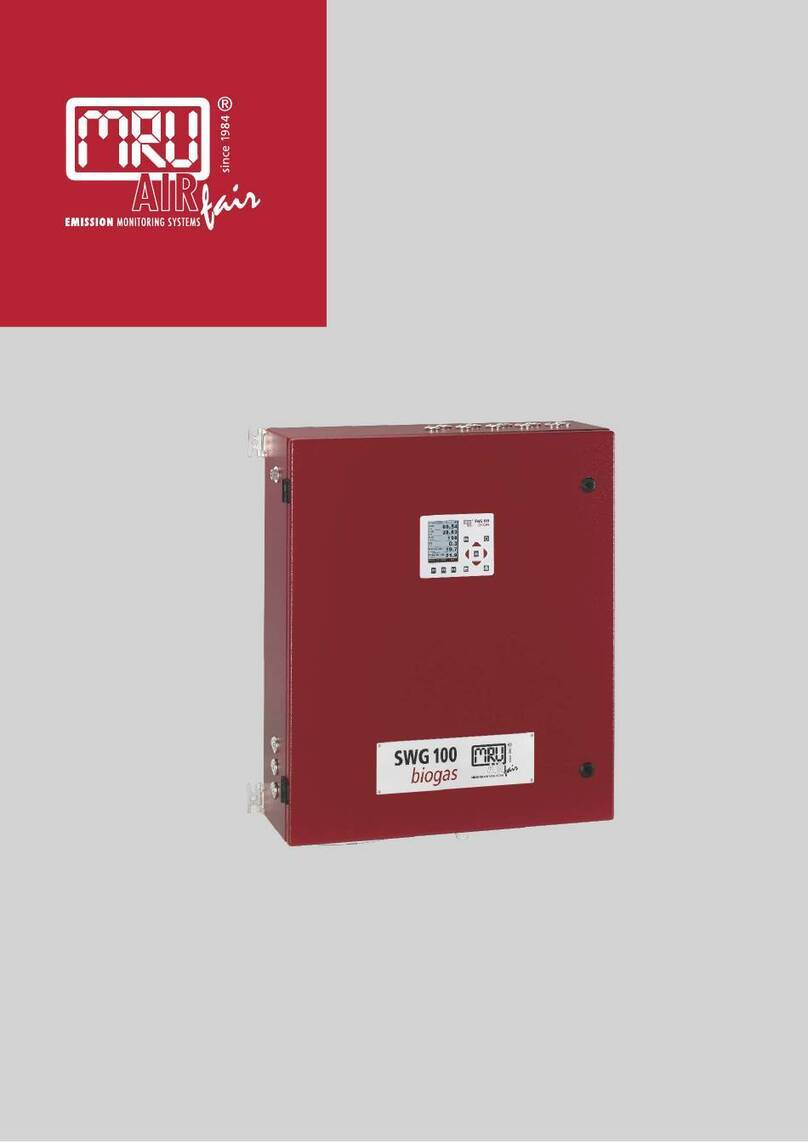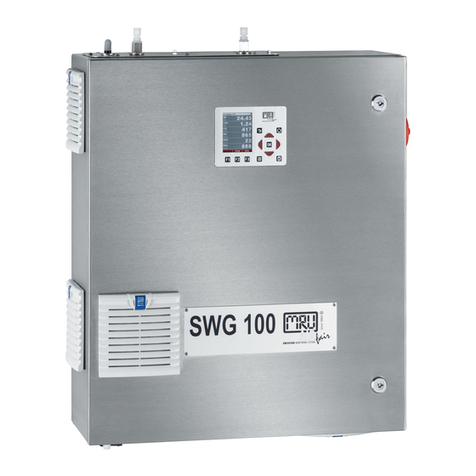
Operation manual OPTIMA7
4 / 51 MRU GmbH, D-74172 Neckarsulm
7Operation ................................................................................................................... 25
7.1. Power ON and zeroing.................................................................................... 25
7.2. Selection of the measurement program................................................... 25
7.3. Combustion test................................................................................................ 26
7.4. Core flow search................................................................................................ 26
7.5. Measured value display .................................................................................. 27
7.6. Non-continuous draft measurement......................................................... 27
7.7. CO-limit (without purging)............................................................................ 28
7.8. CO-purging (optional)..................................................................................... 28
7.9. CO/H2 and CO high (optional) ..................................................................... 28
7.10. Test program...................................................................................................... 29
7.11. CO-ambient ........................................................................................................ 29
7.12. Temporary buffer.............................................................................................. 30
7.13. Storage the measuring results ..................................................................... 30
7.14. Printing the measuring results..................................................................... 31
7.15. Last measurement results.............................................................................. 31
7.16. Pressure measurement................................................................................... 32
7.17. Differential temperature measurement (optional) ............................... 32
7.18. Last measured values ...................................................................................... 32
8Data Storage .............................................................................................................. 33
8.1. Data storage organisation ............................................................................. 33
8.2. Data storage information............................................................................... 33
8.3. Sites administration ......................................................................................... 33
8.4. New entry and change of sites..................................................................... 35
8.5. Delete sites.......................................................................................................... 35
8.6. Data transfer using the SD card ................................................................... 36
8.7. Measurement in Data storage...................................................................... 38
9Extras / Adjustment ................................................................................................... 40
9.1. Service calibration menu ............................................................................... 40
9.2. Factory settings................................................................................................. 40
9.3. Service values..................................................................................................... 40
9.4. Analyzer and accessories leak test.............................................................. 41
9.5. Contents SD card .............................................................................................. 42
9.6. Contents Analyzer information,................................................................... 43
10 Appendix ................................................................................................................ 44
10.1. Text input ............................................................................................................ 44
10.2. Asking user for a decision .............................................................................. 44
10.3. Firmware update............................................................................................... 45
10.4. Using the USB Port ........................................................................................... 45
10.5. Technical data.................................................................................................... 46
Analisis and calculations............................................................................................. 48
10.6. Fuel type list ....................................................................................................... 48
10.7. Troubleshooting ............................................................................................... 49
10.8. Declaration of conformity OPTIMA7........................................................ 51












